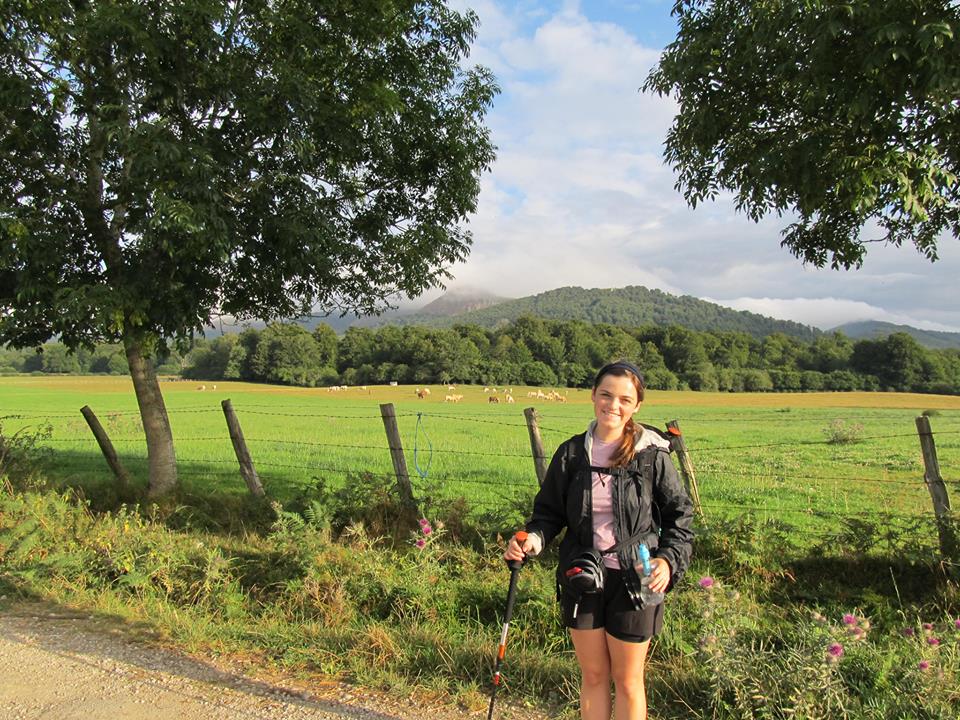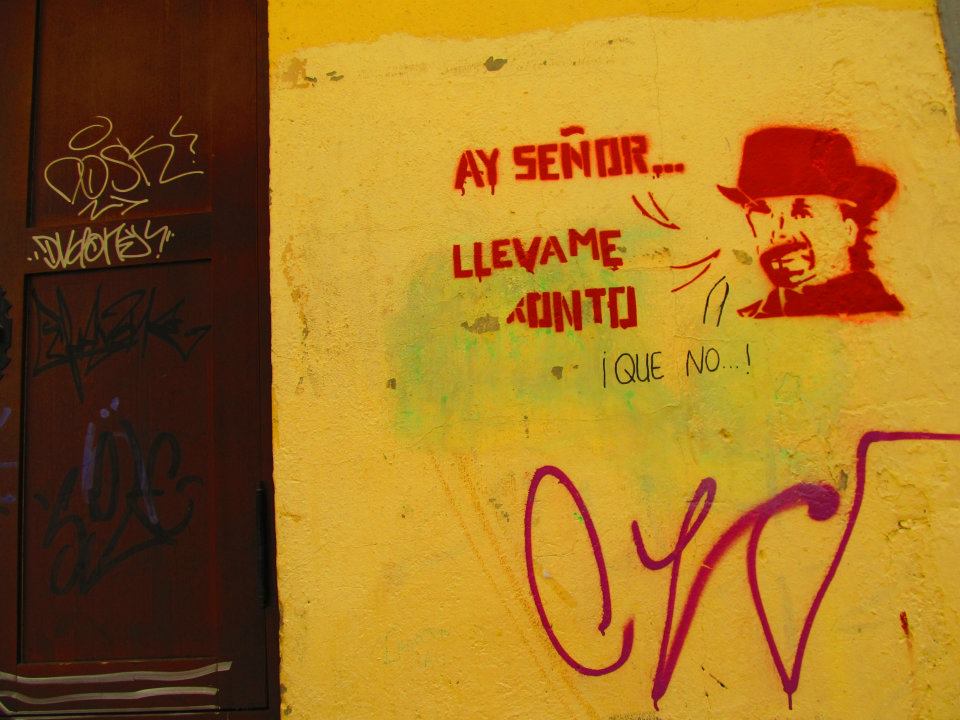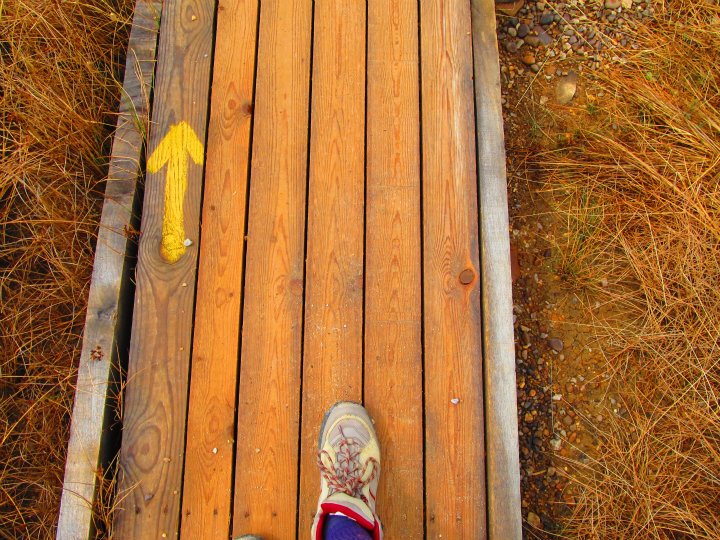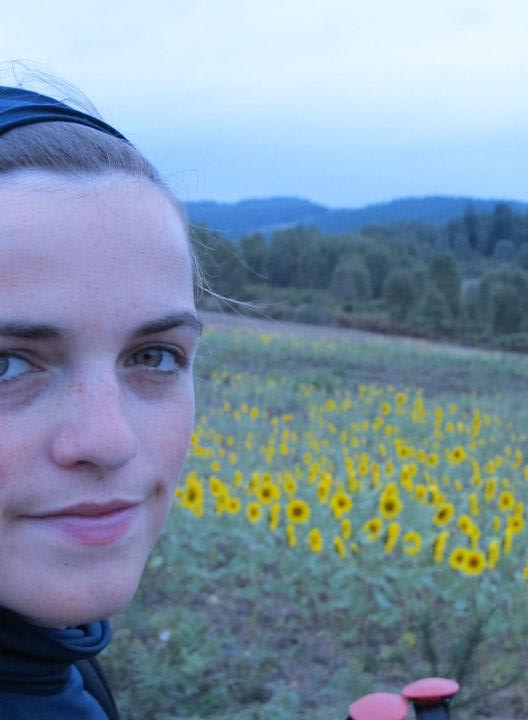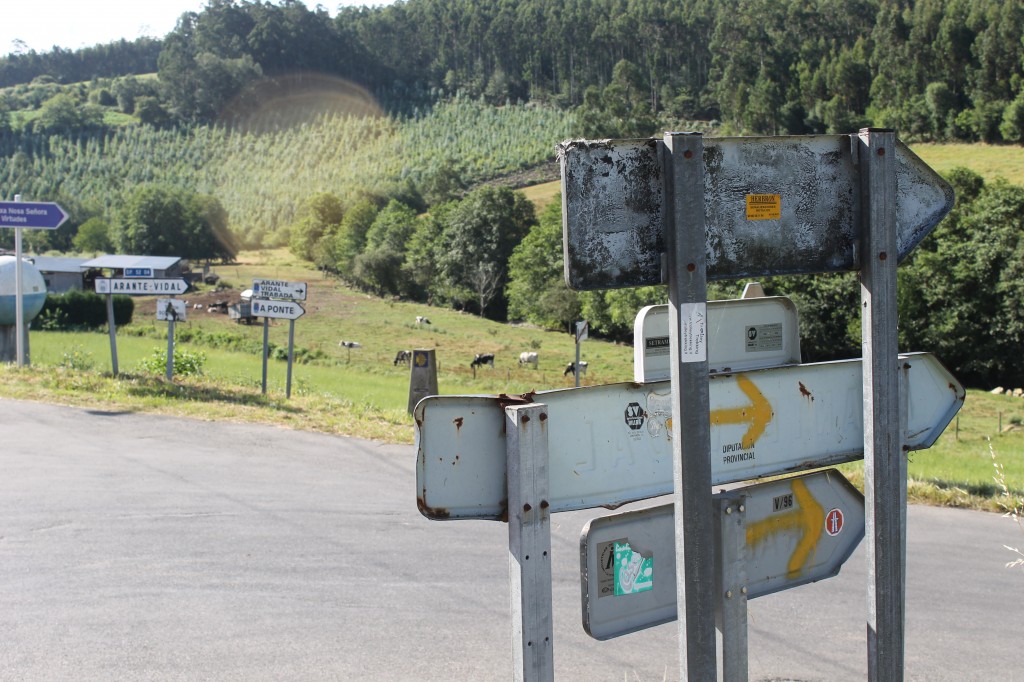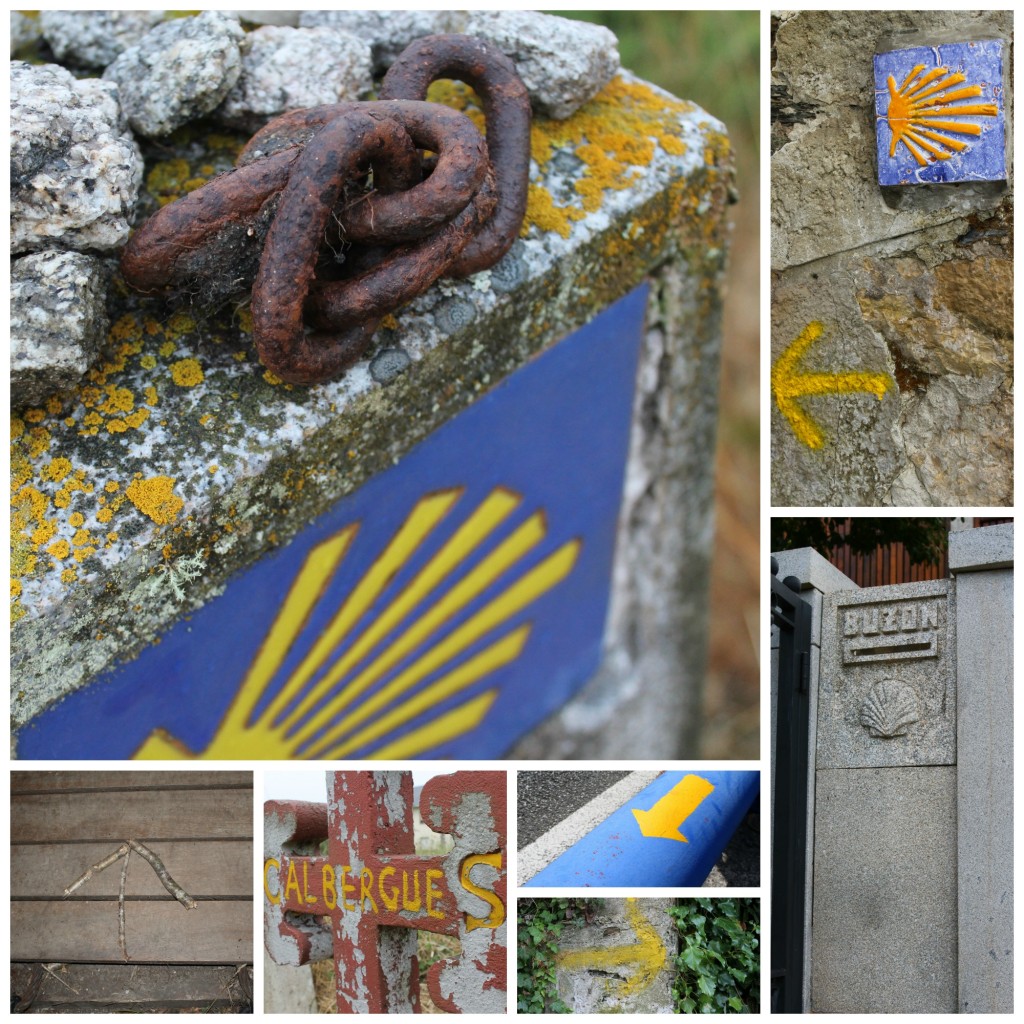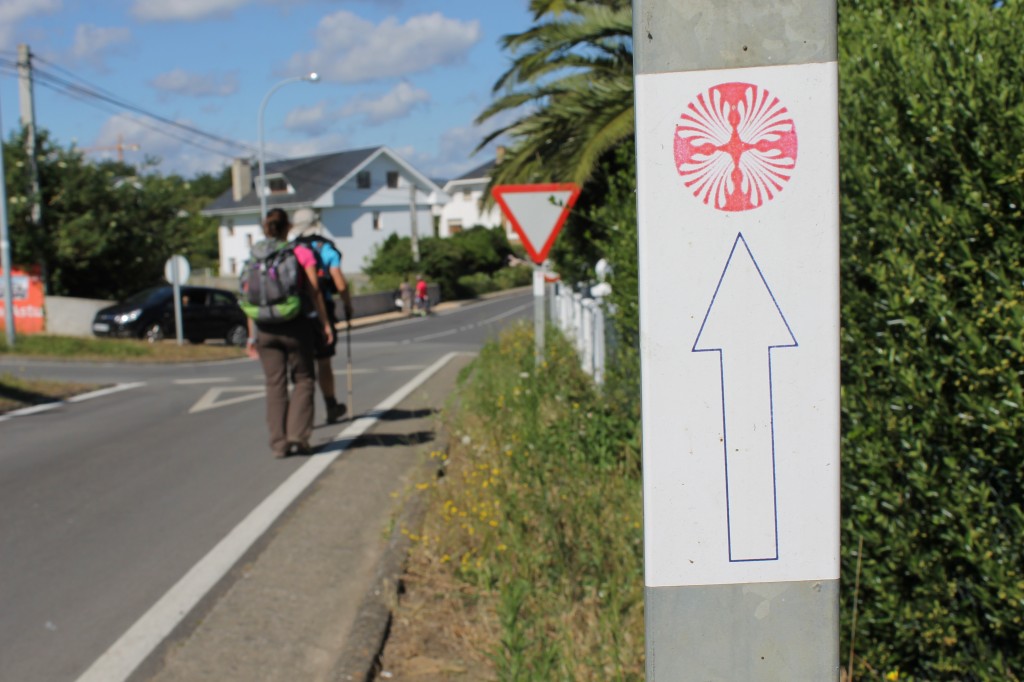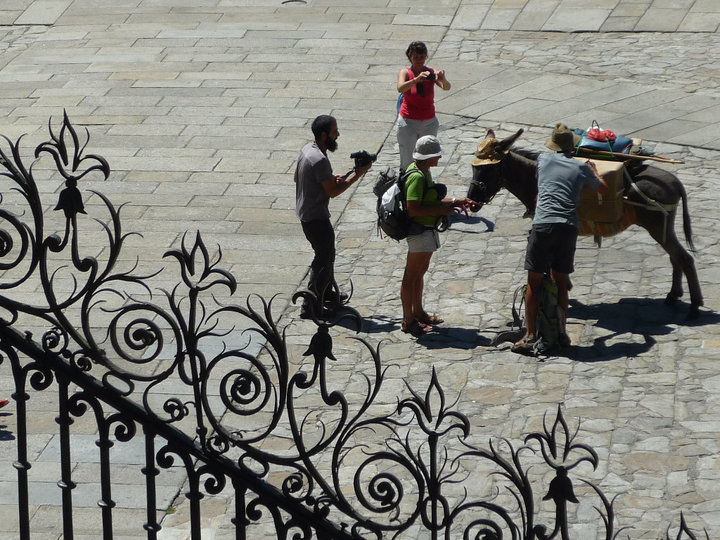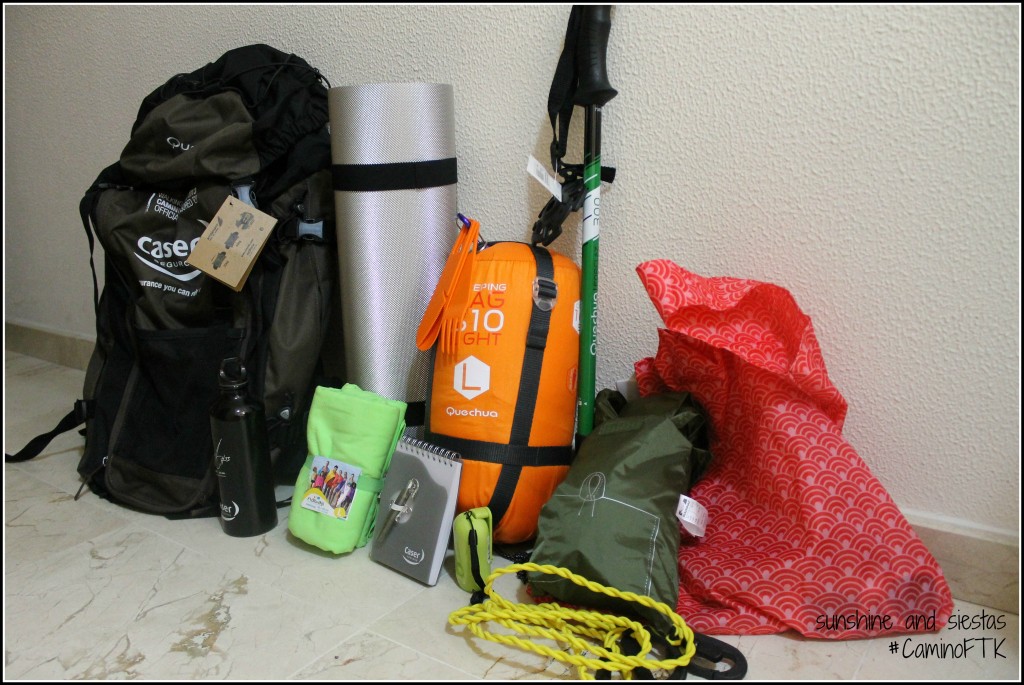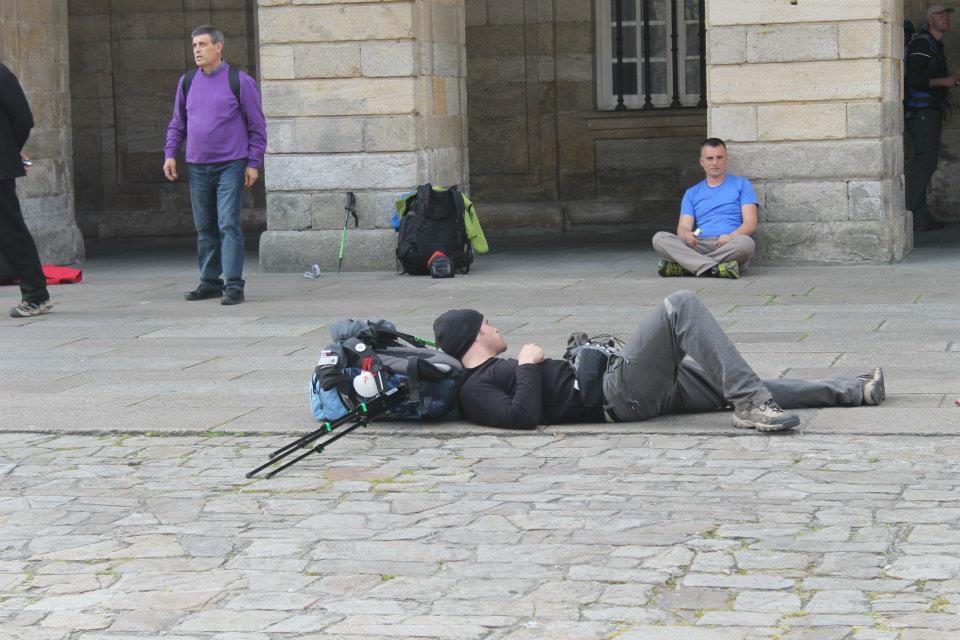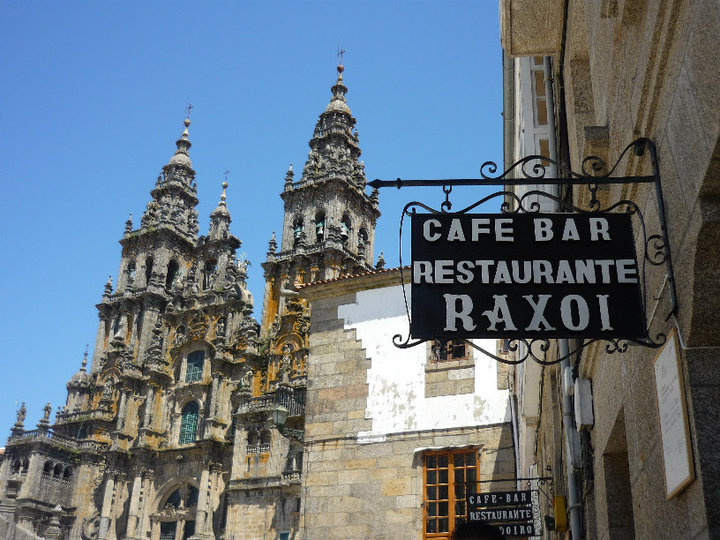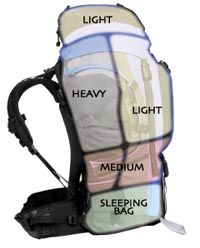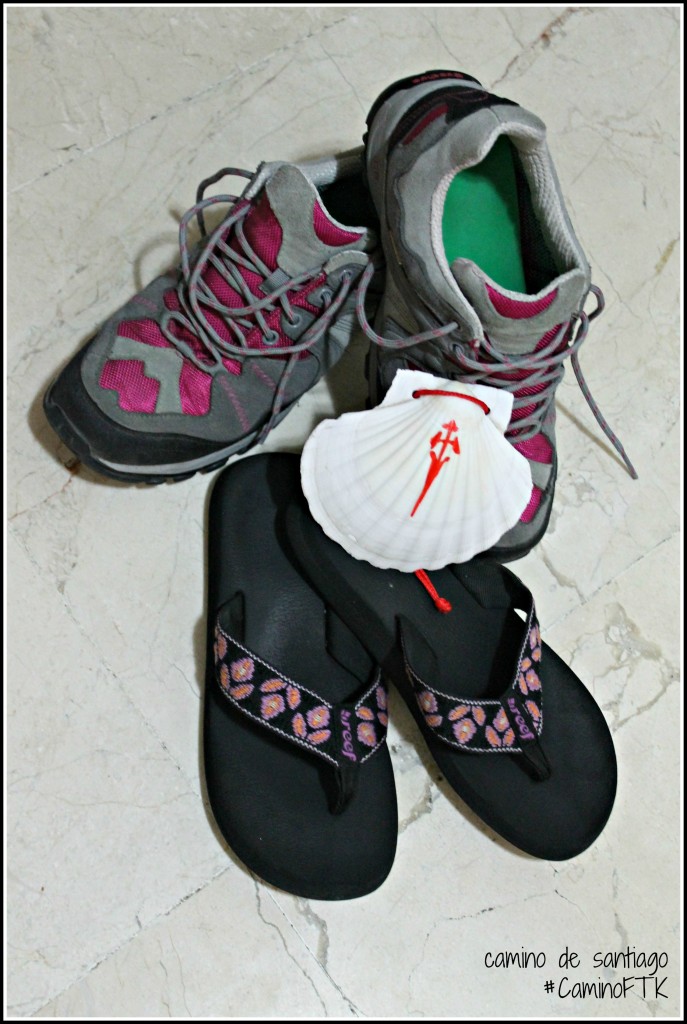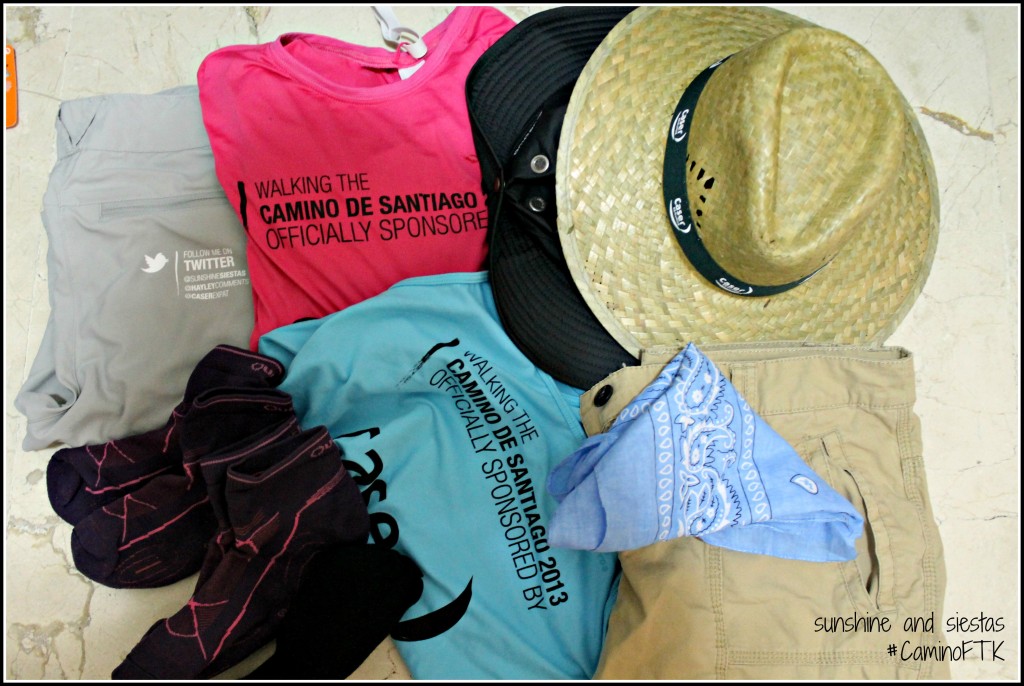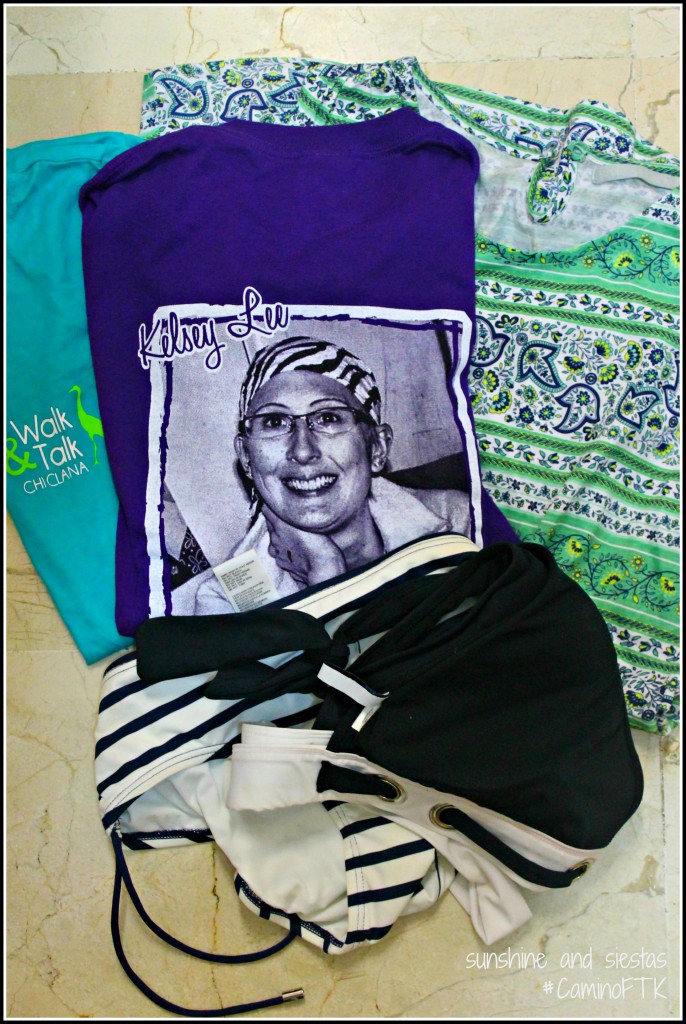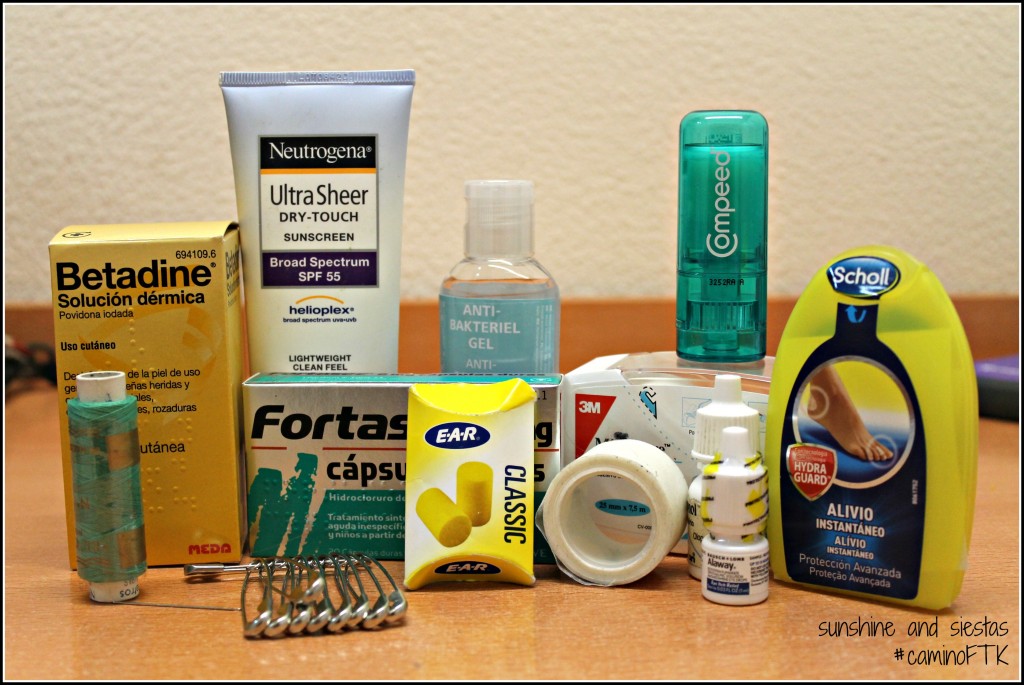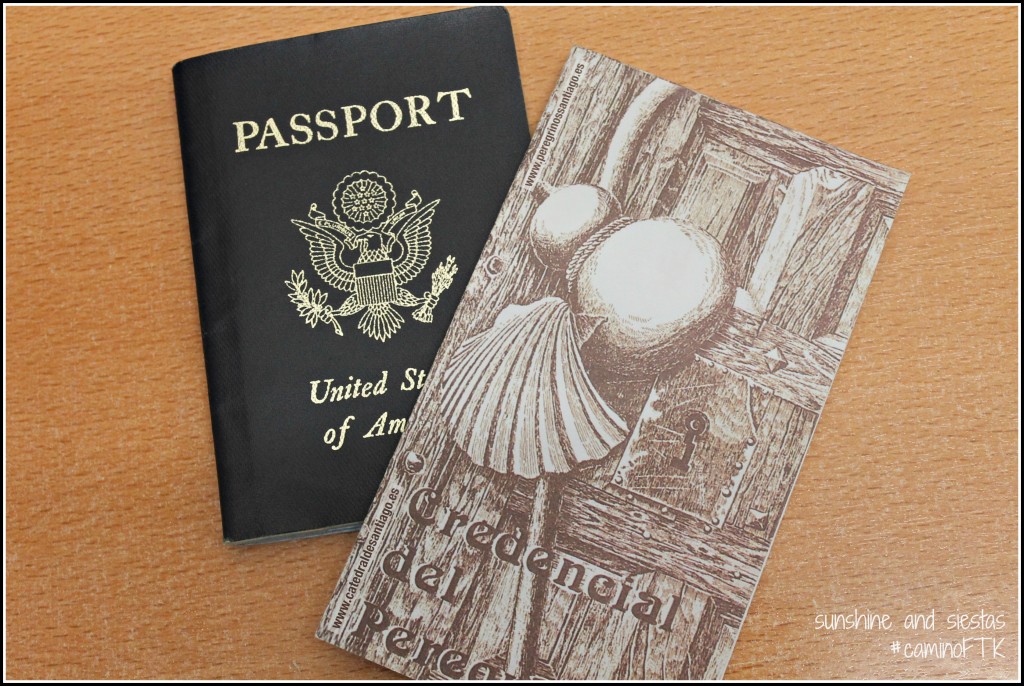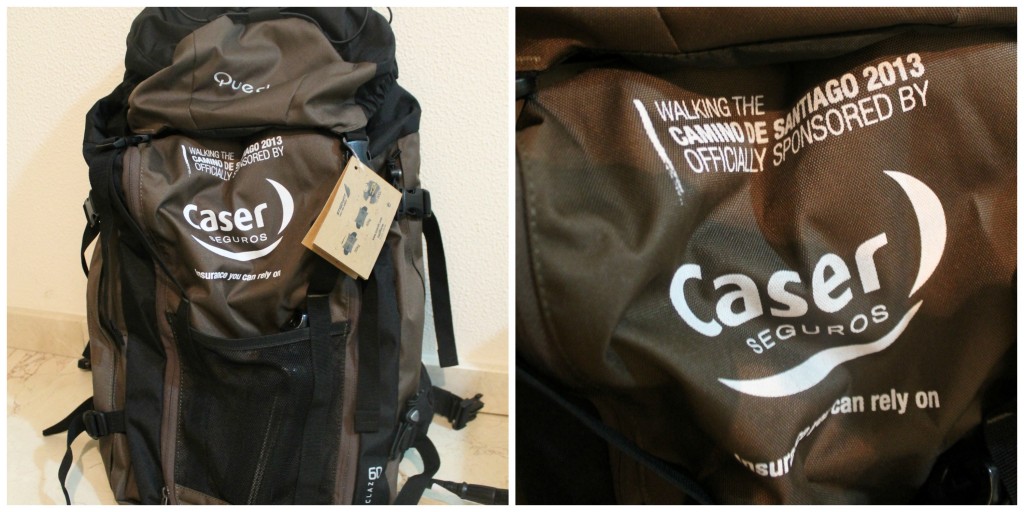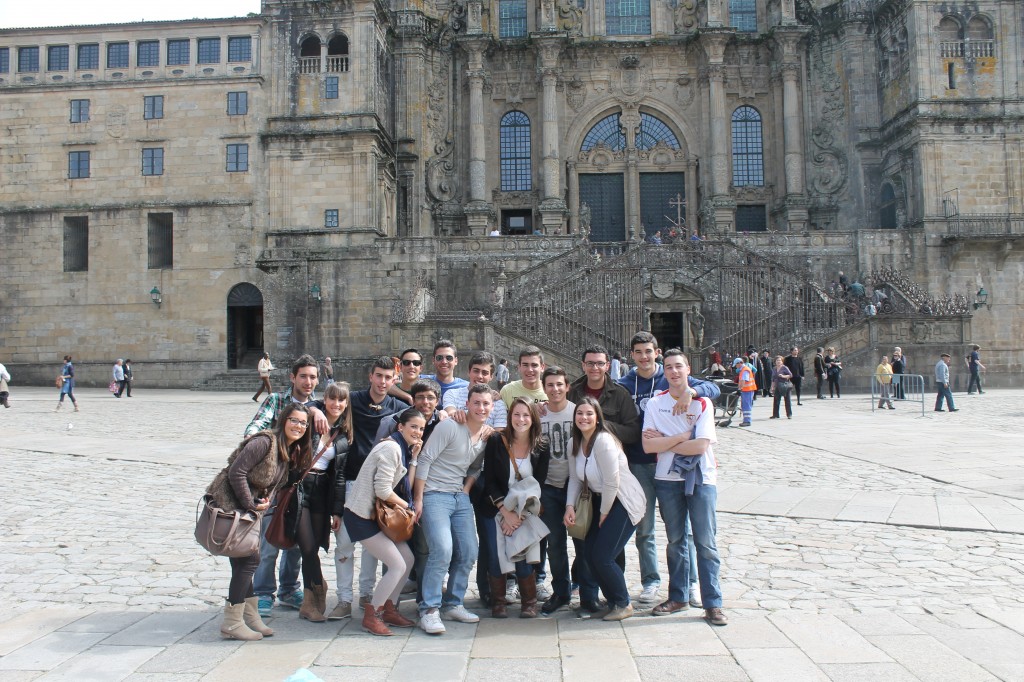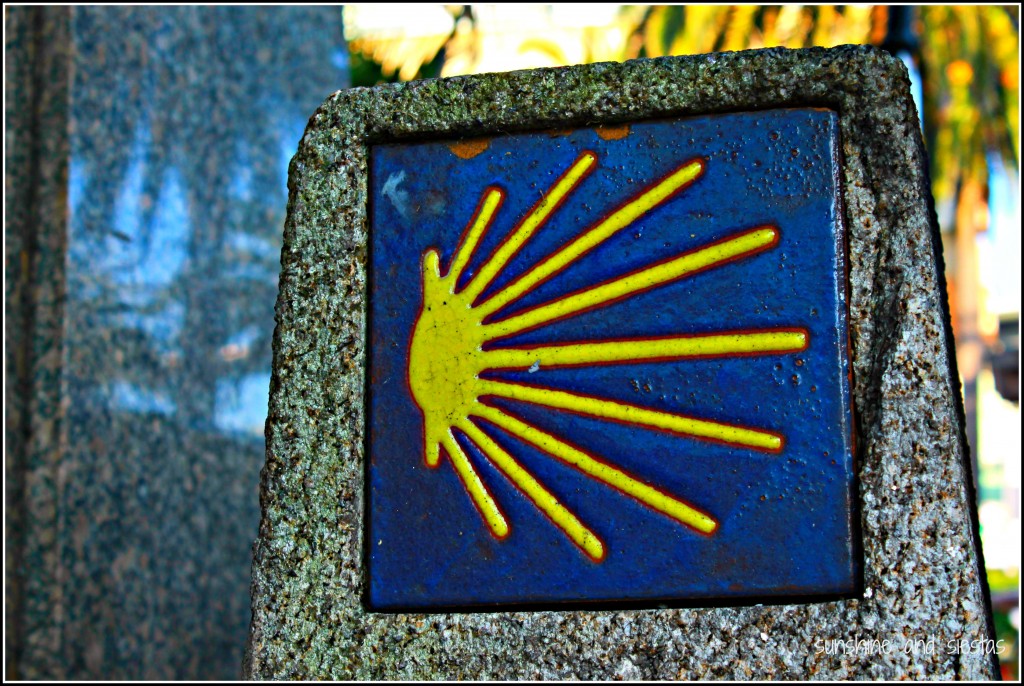I’m touched that several of you have reached out about my journey on the Camino de Santiago to honor my late friend Kelsey and raise money for the University of Iowa Dance Marathon. By far one of the biggest draws of walking the Way is the time it gives you to think and to work out issues, and Meredith Spivey’s month on the Camino Francés two years ago was all about accepting and moving forward. Want to share your story? Email me!
Two years ago today I wrote this in my diary:
This morning I woke up at 5:30 and stretched a while. My right knee is killing me and my calves are obviously not strong like they used to be. I got operated on this morning by a friend to treat my ampolla – apparently the key to prevent them is just cover your feet in vaseline.
I am now sitting on a curb in Pamplona trying to see if a pharmacy will open, but moreso thinking I just can’t go on today. Maybe if I had different shoes or different feet…
This was a rocky point in my life. I had graduated from college during the highest point of US unemployment, had a terrible break-up, saw most of my steady college life crumble in front of my eyes… In short, the only thing that could turn me around was moving somewhere and getting a job. Starting up as we good Americans are taught. So luckily the program that originally told me “don’t hold your breath!” wrote back and said to move to sunny Murcia, part of Spain’s sunny Mediterranean coast.
I moved there and fell in love with Spain again. I had studied previously in the students’ haven of Sevilla and got back into the slow pace of life. I could go for coffee, spending every day with my friends having thoughtful conversations or gossiping because we were relaxed (and everything else is closed till 5 in Murcia anyway).
But then I had decided to get a change of pace and I moved to the big city. Madrid! I had been before with my mom on vacation and at that point had decided that it was just “OK.” But I packed my bags and moved to Spain’s buzzing and sprawling capital.
And it was terrible!
My job and workmates were wonderful, but different. Otherwise, the city was immense, packed with tourists, three times more pricey than my previous southern Spanish locales had been, and lonely. I spent the first year in Madrid literally running to catch the metro, bussing between work and nannying and tutoring, trying to find a decent supermarket, escaping each weekend to the mountains or back to Murcia to get out of the busy hum I had become such a foreigner to by living in my college town and then in Murcia. One of my friends who had continued on at the coast commented that my Spanish was worsening since I was surrounding myself with American friends and I thought it couldn’t get much worse.
When the end of the year came I decided to finally do the Camino de Santiago. I had spent years at university trying to plan out a perfect time to go, with different friends or via different routes, but it was now. I had to go. I had to go alone.
I started out fine. Shucks, I started out amazingly fine – my Spanish pilgrim friends said later, estabas corriendo, and it was true. I had been running, trying to do everything new and differently at once. And I ran up the Pyrenees the first day from France down into Spain on a steep decline. And bummed my knee and hurt my pride in the process.
When I wrote about needing new feet while sitting on the curb in Pamplona, I wasn’t kidding. I was in so much pain. I called my mom crying that old German couples were buzzing by me – how was I in such terrible shape?! I felt like I couldn’t continue – the Camino or maybe another restless year in Madrid. But later that day, a friend I had met along the Way two days prior was having a slow day, too. She convinced and inspired me to walk up and down a big mountain that day in sweltering heat, but we made it to our destination. And I finally decided to listen to myself.
I sat it out. I could not walk for a few days. All my years of dance training told me that I needed to listen to my own body and when I finally did, I could walk within the next 5 days. Eventually, with a new pair of shoes, I walked every step with my pack and without excuses from León the 400km to the end of the world: Finisterre.
I listened to a lot of people share their wisdom and advice along the Camino, including one Spanish pilgrim who promised me that Madrid wasn’t so bad and that I could have a really wonderful time there. I conceptualized what I needed from living in Madrid and how I should change my life and add my own little yellow arrows along the way. I knew the best advice would come from my own mind if I just stopped long enough to think it through. Luckily the Camino leaves a lot of time for thought!
On my birthday I arrived to Santiago and later that month I figured everything out. I registered for Spanish class at one of the Official Language Schools, found an amazing apartment with a great flatmate, made new friends and continued to visit my pilgrim friends I had made, I worked more normal hours and picked up new classes that really made me enjoy planning the lessons, I didn’t try to escape every weekend and instead, kept up with my friends and chose to visit them instead of fled to them. In fact, I didn’t even leave Spain that entire year other than a trip home for Christmas with my family. I finally got it. And I was so, so happy.
I still keep up with my pilgrim friends and the one who got me on my feet that toughest day is going to have a baby come December. And my Spanish friend that promised me Madrid would improve was there in the pouring rain to take me to dinner when I arrived back to Madrid this April. The Beatles were always right when they said that we get by with a little help from our friends. And I am so glad for that, and being able to change a few things (sometimes as simple as your shoes!) to get back on the right foot and find your way; your own camino.
Meredith Spivey has spent nearly fourteen seasons in Spain and will be returning soon to her beloved Madrid to begin another year of teaching English. She is a self-proclaimed “happy wanderer” and this past year spent some months in Italy eating pasta, sailing, and talking like the Pope (they both speak Italian with a Spanish accent!). Meredith prides herself on her prize-winning apple pie recipe!
